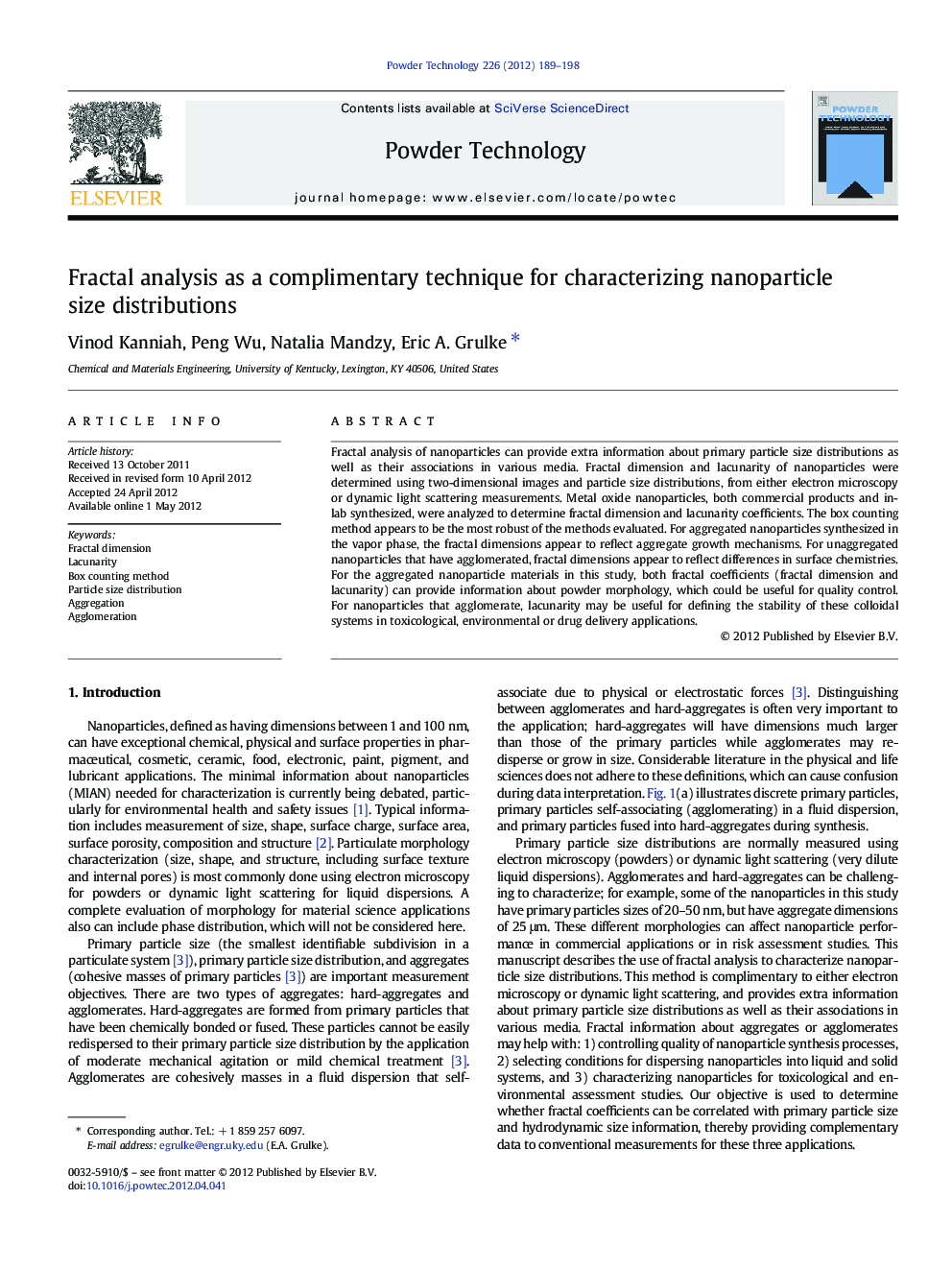| Article ID | Journal | Published Year | Pages | File Type |
|---|---|---|---|---|
| 237106 | Powder Technology | 2012 | 10 Pages |
Fractal analysis of nanoparticles can provide extra information about primary particle size distributions as well as their associations in various media. Fractal dimension and lacunarity of nanoparticles were determined using two-dimensional images and particle size distributions, from either electron microscopy or dynamic light scattering measurements. Metal oxide nanoparticles, both commercial products and in-lab synthesized, were analyzed to determine fractal dimension and lacunarity coefficients. The box counting method appears to be the most robust of the methods evaluated. For aggregated nanoparticles synthesized in the vapor phase, the fractal dimensions appear to reflect aggregate growth mechanisms. For unaggregated nanoparticles that have agglomerated, fractal dimensions appear to reflect differences in surface chemistries. For the aggregated nanoparticle materials in this study, both fractal coefficients (fractal dimension and lacunarity) can provide information about powder morphology, which could be useful for quality control. For nanoparticles that agglomerate, lacunarity may be useful for defining the stability of these colloidal systems in toxicological, environmental or drug delivery applications.
Graphical abstractIn this work, a) aggregation/agglomeration phenomenon of dry/wet particles is explained along with b) fractal analysis framework for nanoparticle characterization that could be related to other properties (zeta potential, particle stability etc.).Figure optionsDownload full-size imageDownload as PowerPoint slideHighlights► Fractal coefficients are determined via 2-D images and PSDs. ► Ceria and titania nanoparticle products from commercial sources were evaluated. ► The box counting method gives fractal coefficients within theoretical ranges. ► Box counting coefficients correlated to primary particle size in some cases.
